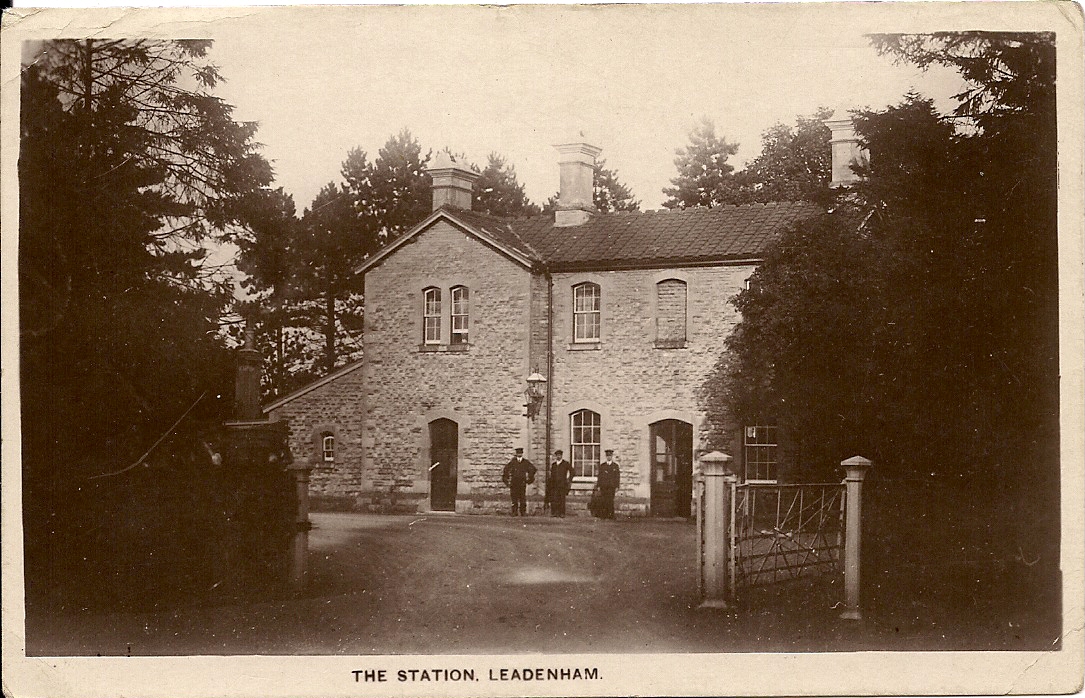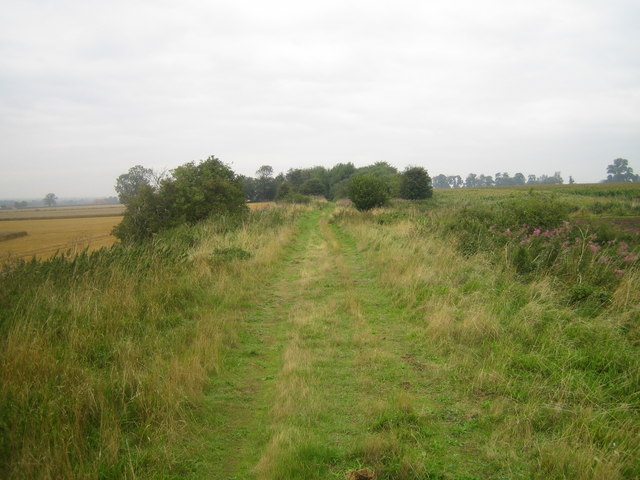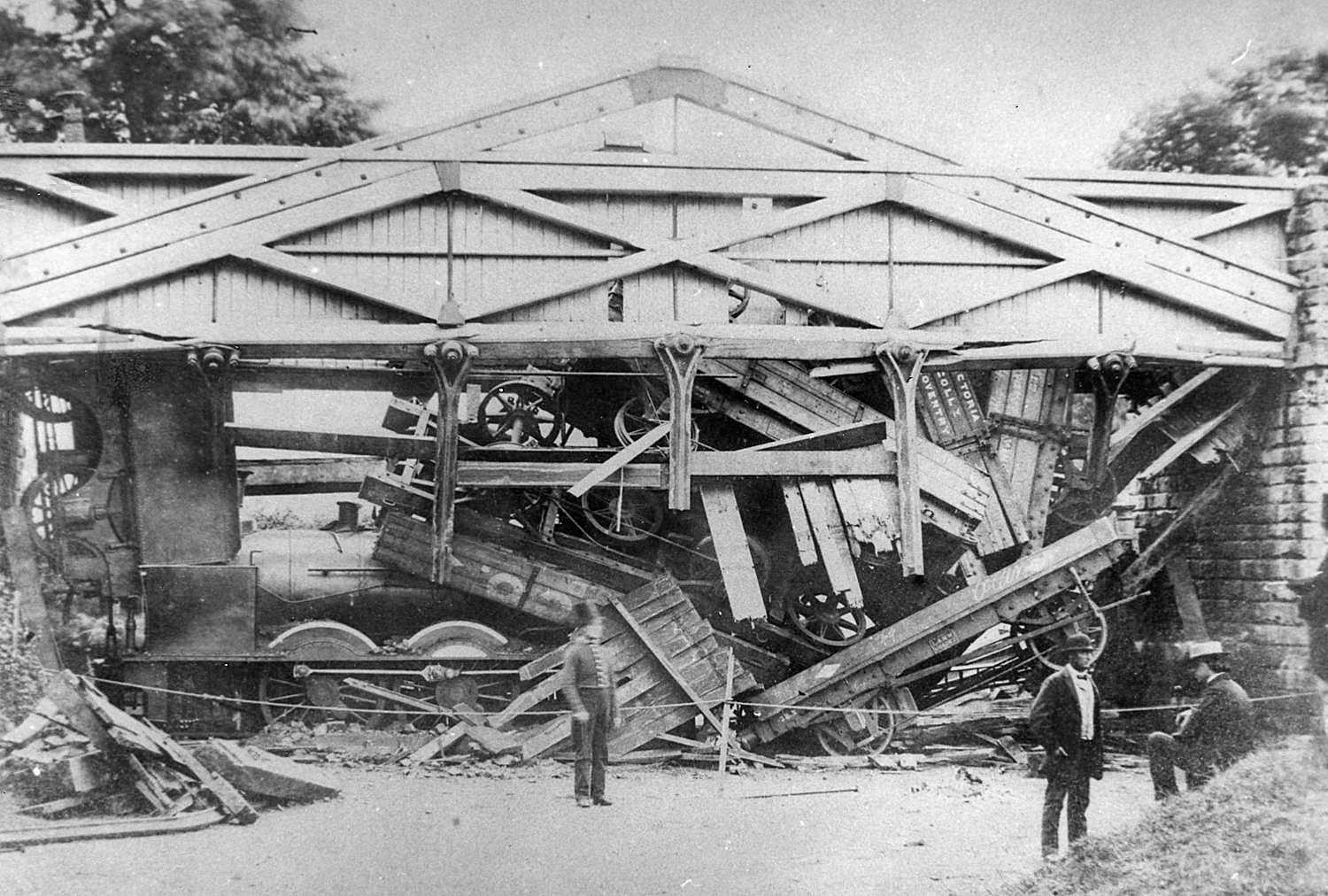|
Grantham And Lincoln Railway Line
The Grantham and Lincoln railway line was a line in Lincolnshire, built by the Great Northern Railway to shorten the distance between the town of Grantham and city of Lincoln. It had already formed a network in Lincolnshire, but the route from London and points south and west of Grantham was very indirect. The line opened 1867, and was 18 miles in length, from Honington, near Grantham to Pelham Street Junction in Lincoln. Running through rural terrain, it was never heavily developed, and after nationalisation, through traffic was concentrated on a better alternative route via Newark. All local stations except Leadenham closed in 1962, and the line from Honington to Lincoln closed completely in 1965. Origins In 1848 the Great Northern Railway opened part of its authorised network, from Peterborough to Lincoln via Spalding and Boston in 1848. The GNR called this the Loop Line, or the Lincolnshire Loop. In due course it opened its Towns Line, which eventually became part of the Eas ... [...More Info...] [...Related Items...] OR: [Wikipedia] [Google] [Baidu] |
Lincolnshire
Lincolnshire (abbreviated Lincs.) is a county in the East Midlands of England, with a long coastline on the North Sea to the east. It borders Norfolk to the south-east, Cambridgeshire to the south, Rutland to the south-west, Leicestershire and Nottinghamshire to the west, South Yorkshire to the north-west, and the East Riding of Yorkshire to the north. It also borders Northamptonshire in the south for just , England's shortest county boundary. The county town is Lincoln, where the county council is also based. The ceremonial county of Lincolnshire consists of the non-metropolitan county of Lincolnshire and the area covered by the unitary authorities of North Lincolnshire and North East Lincolnshire. Part of the ceremonial county is in the Yorkshire and the Humber region of England, and most is in the East Midlands region. The county is the second-largest of the English ceremonial counties and one that is predominantly agricultural in land use. The county is fourth-larg ... [...More Info...] [...Related Items...] OR: [Wikipedia] [Google] [Baidu] |
Leadenham Railway Station
Leadenham railway station was a railway station in Leadenham, Lincolnshire. It closed on 1 November 1965. The station was located on Main Road, being built in 1867 from coursed rubble with flush ashlar dressings along with a slate roof with overhanging eaves. As the station was on the parish border between the Leadenham and Welbourn, Ancaster, Lincolnshire, Ancaster stone was used for the station and the goods shed and bridge to the north were built of red brick as they fell within the Welbourn parish. The design of the station differed from most of the stations on the line that were built of red brick, but local landowner Lieutenant-General J. Reeve of Leadenham House, Leadenham Hall insisted that the station was to be built of local stone. Ordnance Survey maps from 1887 and 1905 show the station building to the west of the railway tracks with a waiting shelter on the opposite platform. There was also a signal box to the north. The old station building is still standing, it is ... [...More Info...] [...Related Items...] OR: [Wikipedia] [Google] [Baidu] |
Lincoln Railway Station
Lincoln railway station (previously Lincoln Central) serves the city of Lincoln in Lincolnshire, England. The station is owned by Network Rail and managed by East Midlands Railway. East Midlands Railway provides the majority of services from the station, with other services being provided by Northern and London North Eastern Railway. The station is part of the PlusBus scheme, where train and bus tickets can be bought together at a saving. Lincoln Central bus station, the city's main bus station, is within a couple of minutes' walk from the railway station and is located to the north-east of the station and easily accessed via a pedestrian crossing and pedestrianised plaza. History The station buildings were designed by John Henry Taylor of London in 1848, for the Great Northern Railway company. It is built in a Tudor revival style of yellow brick, with stone dressings and slate roofs, with 6 ridge and 8 side wall stacks. The buildings and footbridge were Grade II listed in 19 ... [...More Info...] [...Related Items...] OR: [Wikipedia] [Google] [Baidu] |
Waddington Railway Station
Waddington railway station was a station in Waddington, Lincolnshire Waddington is a village and civil parish in the North Kesteven district of Lincolnshire, England, situated approximately south of Lincoln on the A607 Grantham Road. The village is known for its association with RAF Waddington. At the 2001 Ce ... which opened on 15 April 1867 but closed for passengers on 10 September 1962 and for freight in 1964. The line through the station remained open until 1965. The remaining buildings attributed to the Waddington Railway Station have been restored during the summer of 2010. These are located adjacent to the properties on Station Rd. References Disused railway stations in Lincolnshire Former Great Northern Railway stations Railway stations in Great Britain opened in 1867 Railway stations in Great Britain closed in 1962 1867 establishments in England 1962 disestablishments in England {{Lincolnshire-railstation-stub ... [...More Info...] [...Related Items...] OR: [Wikipedia] [Google] [Baidu] |
Harmston Railway Station
Harmston railway station was a station in Harmston, Lincolnshire on the Grantham and Lincoln railway line The Grantham and Lincoln railway line was a line in Lincolnshire, built by the Great Northern Railway to shorten the distance between the town of Grantham and city of Lincoln. It had already formed a network in Lincolnshire, but the route from Lon .... It closed in 1962 but the line remained open until 1965. References Disused railway stations in Lincolnshire Former Great Northern Railway stations Railway stations in Great Britain opened in 1867 Railway stations in Great Britain closed in 1962 {{Lincolnshire-railstation-stub ... [...More Info...] [...Related Items...] OR: [Wikipedia] [Google] [Baidu] |
Caythorpe Railway Station
Caythorpe railway station was a station in Caythorpe, Lincolnshire. Built to serve the nearby village of the same name. It was on the Grantham and Lincoln railway line, between Honington junction and Leadenham, onwards to Navenby, Harmston, Waddington to Lincoln. The line was owned by the Great Northern Railway. The station closed for passengers in 1962, for goods in 1964 and the line closed in 1965 as part of the Beeching rationalisation of the UK railway system. The site now houses recycling centrefor household waste. The Great Northern Railway (GNR) was a British railway company established by the Great Northern Railway Act of 1846. On 1 January 1923 the company lost its identity as a constituent of the newly formed London and North Eastern Railway. The line, opened in 1867, ran through land at Caythorpe owned by GNR chairman George Hussey Packe. Packe's land was the first in south-west Lincolnshire to be mined for iron ore. Opencast Open-pit mining, also known as op ... [...More Info...] [...Related Items...] OR: [Wikipedia] [Google] [Baidu] |
Honington Railway Station
Honington railway station was a station in the village of Honington, Lincolnshire. It was located on the line Grantham and Lincoln railway line from Grantham to Sleaford and Skegness, at the junction with the branch to Lincoln Lincoln most commonly refers to: * Abraham Lincoln (1809–1865), the sixteenth president of the United States * Lincoln, England, cathedral city and county town of Lincolnshire, England * Lincoln, Nebraska, the capital of Nebraska, U.S. * Lincoln ....British Railways Atlas.1947. p.16 It was closed for regular services on 10 September 1962 but was used occasionally until 1965. The disused platforms are still in situ. References Disused railway stations in Lincolnshire Former Great Northern Railway stations Railway stations in Great Britain opened in 1857 Railway stations in Great Britain closed in 1962 1857 establishments in England 1962 disestablishments in England {{Lincolnshire-railstation-stub ... [...More Info...] [...Related Items...] OR: [Wikipedia] [Google] [Baidu] |
Barkston Railway Station
Barkston railway station is a former station serving the village of Barkston, Lincolnshire. It was on the Great Northern Railway main line near to the now realigned (Allington chord) junction with the lines to Sleaford and Lincoln Lincoln most commonly refers to: * Abraham Lincoln (1809–1865), the sixteenth president of the United States * Lincoln, England, cathedral city and county town of Lincolnshire, England * Lincoln, Nebraska, the capital of Nebraska, U.S. * Lincoln ....British Railways Atlas.1947. p.16 The station was closed for passengers in 1955 and goods in 1964 . It has been demolished leaving no trace today of its existence. References Disused railway stations in Lincolnshire Former Great Northern Railway stations Railway stations in Great Britain opened in 1867 Railway stations in Great Britain closed in 1955 {{Lincolnshire-railstation-stub ... [...More Info...] [...Related Items...] OR: [Wikipedia] [Google] [Baidu] |
Grantham Railway Station
Grantham railway station is on the East Coast Main Line in the United Kingdom, serving the town of Grantham, Lincolnshire. It is down the line from and is situated on the main line between to the south and to the north. Two secondary lines diverge from the main line north of Grantham: the "Poacher Line" to and a branch line to . Its three-letter station code is GRA. History The original station at Grantham ( Old Wharf) was opened when the Ambergate, Nottingham, Boston & Eastern Junction Railway opened its line from Nottingham on 15 July 1850. This line was taken over by the Great Northern Railway in 1854. This was replaced by the present station which opened on 1 August 1852; the Old Wharf station closed the following day. The new station was on the GNR's direct line between Peterborough and Retford (the Towns Line), which was completed in 1852. The alternative route via Boston and Lincoln (the Fens Loop Line) had already opened in 1850. The Boston, Sleaford and Mid ... [...More Info...] [...Related Items...] OR: [Wikipedia] [Google] [Baidu] |
Navenby Railway Station
Navenby railway station was a railway station in Navenby, Lincolnshire on the Grantham and Lincoln railway line. The station closed for passengers in 1962 and freight in 1964 but the line remained open until it was closed in 1965 as part of the Beeching Axe The Beeching cuts (also Beeching Axe) was a plan to increase the efficiency of the nationalised railway system in Great Britain. The plan was outlined in two reports: ''The Reshaping of British Railways'' (1963) and ''The Development of the .... References Disused railway stations in Lincolnshire Former Great Northern Railway stations Railway stations in Great Britain opened in 1867 Railway stations in Great Britain closed in 1962 {{Lincolnshire-railstation-stub ... [...More Info...] [...Related Items...] OR: [Wikipedia] [Google] [Baidu] |
George Hussey Packe
George Hussey Packe (1 May 1796 – 2 July 1874) was a United Kingdom Member of Parliament, an army officer present at the Battle of Waterloo, and was instrumental in establishing the Great Northern Railway. Personal life George Hussey Packe was a scion of the family of Sir Christopher Packe, a 17th-century Lord Mayor of London. He was born at Hanthorpe House, Morton and Hanthorpe, Lincolnshire in 1796, the second son to Charles James Packe (1758–1837), of Prestwold Hall, Leicestershire, and his first wife Penelope, of Blythe Hall, Warwickshire. He married in 1824 Maryanne-Lidia (1796–1876), daughter of John Heathcote – of Connington Castle, Huntingdonshire, and MP for Ripon – and Mary Anne (née Thornhill). They had two children: Marianne Penelope Packe (1832–1921) and Hussey Packe (1846–1908).Sylvanus, Urban; ''The Gentleman's Magazine'' (1837), volume 7, p. 656Howard, Joseph Jackson, Crisp, Frederick Arthur (1899); ''Visitations of England and Wales'' ... [...More Info...] [...Related Items...] OR: [Wikipedia] [Google] [Baidu] |
Henry Tyler (Conservative Politician)
Sir Henry Whatley Tyler (7 March 1827 – 30 January 1908) was a pioneering British engineer and politician, who contributed to the Great Exhibition of 1851 and whose collections helped found the Science Museum in South Kensington. His interests were mainly in railways, where he served Inspector of Railways and a railway company director but also in water and iron working. He was also a Conservative politician who sat in the House of Commons from 1880 to 1892. Early life Tyler was born in Mayfair, London, the son of John Chatfield Tyler and attended the Royal Military Academy Woolwich. He received a commission as a Second Lieutenant in the Royal Engineers on 19 December 1844, having previously been a Gentleman Cadet; he was promoted to First Lieutenant on 1 April 1846; and to Second Captain on 31 March 1854. In 1851 he was a lieutenant called upon by Henry Cole to assist with the organisation of the Great Exhibition. In 1860 he donated a set of prospectuses to the State Library ... [...More Info...] [...Related Items...] OR: [Wikipedia] [Google] [Baidu] |






